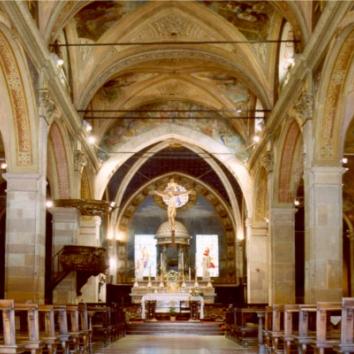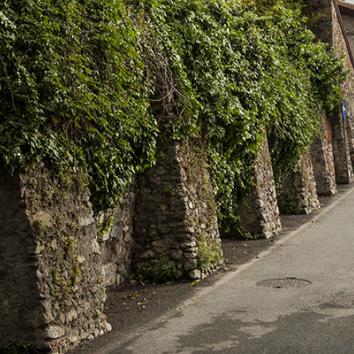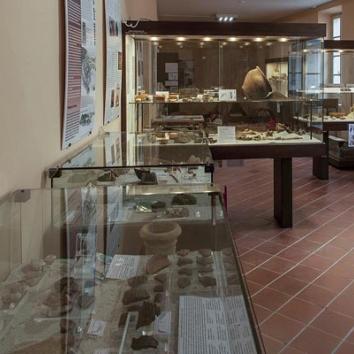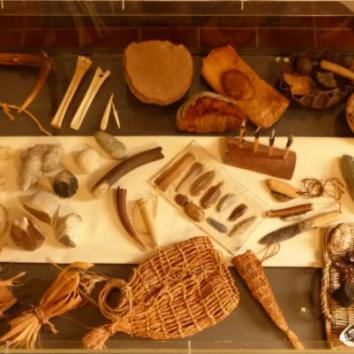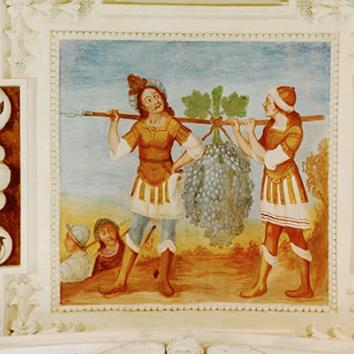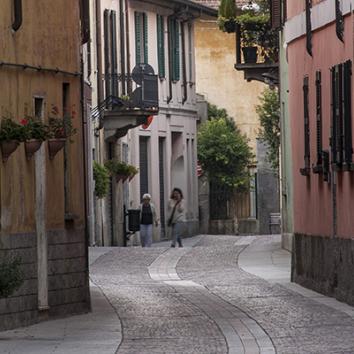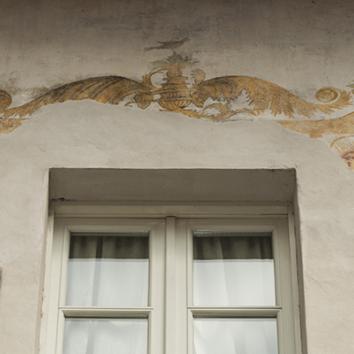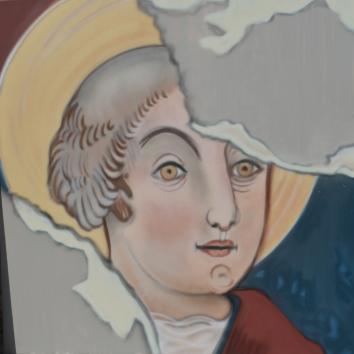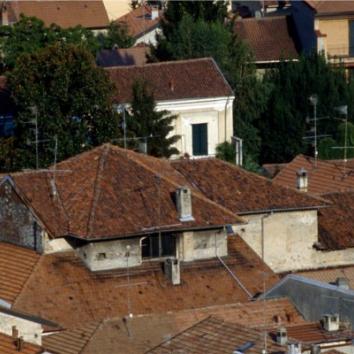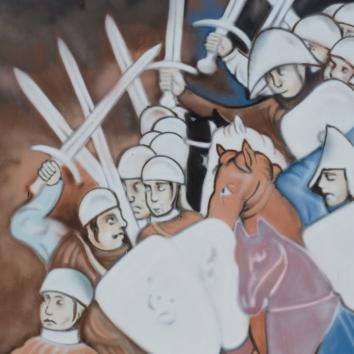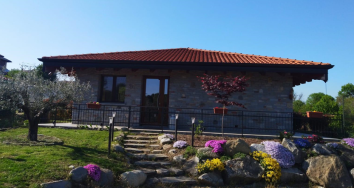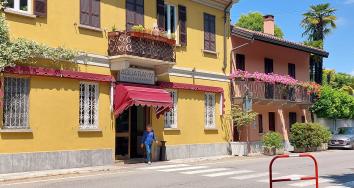Santa Liberata (by Andrea Ravo Mattoni)
Sito n. 54 del Museo Diffuso
Painting on canvas showing the face of Santa Liberata. Andrea Ravo Mattoni, 2019, spray paint on PVC canvas, 2 x 1.5 m. The original work belongs to the parish and is not open to the public; it comes from the church of Santa Liberata in Via Lombardia which was deconsecrated and became private property in the 19th century. The original painting shows a standing young woman, dressed in fine yellow and green robes and a red cloak, with pearl earrings and a precious clasp on her chest. Her hair is gathered and covered with a light cloth wrapped around her head; her face and gaze look leftwards towards the sky. The saint holds a newborn baby completely wrapped in white bands in her right arm, her left hand rests on a stone surface on which lies another sleeping child in a white robe. The dark background does not allow the setting to be clearly seen; it appears to be a natural landscape with trees and rocks. In Angera the cult of Santa Liberata was followed for a long time; she was revered as a child's nurse and protector against the dangers of childbirth and childhood diseases. Until a few years ago, the women of Angera, Capronno, Cadrezzate, Ispra and numerous nearby municipalities still met on 18th January for a lunch in her honour, reserved only for women married or soon to be so – a Women's Day festival! Liberata's history is old and complex; in fact there are several saints who bear this name, but all share the feature of having cult companions, sisters or other saints, with whom they protect the health of unborn children and pregnant women. The prayer to the saint is unequivocal: Santa Liberata, as pleasant was the entry, make also the departure. It seems that the veneration of the saint and her sisters is the Christian transposition of an age-old pagan cult linked to the cycles of birth, destiny, death and regeneration – the cult of the Matronae goddesses, protectors of mothers and children, also called Fatae because they could predict fate, the unborn child's destiny. There is evidence that this cult has existed in Angera and its surroundings for at least 2000 years, for example an important Roman altar found in Angera and now on display in the Varese Archaeological Museum, which shows the goddesses holding hands, dancing under an oak tree. See Angera Open-Air Museum Site 49 - www.angera.it



